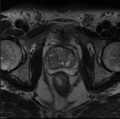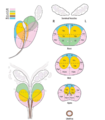Difference between revisions of "2017 Winter Project Week/ProstateSectorSegmentation"
From NAMIC Wiki
| Line 29: | Line 29: | ||
* Generation/ Refinement of ground truth data | * Generation/ Refinement of ground truth data | ||
* Creation of a 3D sector model | * Creation of a 3D sector model | ||
| − | * | + | * Test with ProstateX challenge dataset (where zones of findings are given) to predict the zone with Deep Learning |
| − | * Try (model-based) segmentation approach (costs for segmentation optimization can be derived for example from supervised classification of the gland tissue). The shape of individual sector models could be used as segmentation prior | + | * if more training data is available: deep learning for an automatic sector segmentation |
| − | + | * (Try (model-based) segmentation approach (costs for segmentation optimization can be derived for example from supervised classification of the gland tissue). The shape of individual sector models could be used as segmentation prior) | |
| + | |||
| + | |||
| | | | ||
<!-- Progress and Next steps bullet points (fill out at the end of project week) --> | <!-- Progress and Next steps bullet points (fill out at the end of project week) --> | ||
| − | * | + | * Creation of 3 zone segmentations of the prostate (different volumes) |
| + | * Prediction of zones in ProstateX challenge with Deep Learning is in progress | ||
|} | |} | ||
==Background and References== | ==Background and References== | ||
<!-- Use this space for information that may help people better understand your project, like links to papers, source code, or data --> | <!-- Use this space for information that may help people better understand your project, like links to papers, source code, or data --> | ||
Revision as of 14:33, 13 January 2017
Home < 2017 Winter Project Week < ProstateSectorSegmentationKey Investigators
- Anneke Meyer, University of Magdeburg (Germany)
- Andrey Fedorov, BWH
- Alireza Mehrtash, BWH
- Christian Hansen, University of Magdeburg (Germany)
- Teodora Szasz, University of Chicago
Project Description
| Objective | Approach and Plan | Progress and Next Steps |
|---|---|---|
|
|
|


